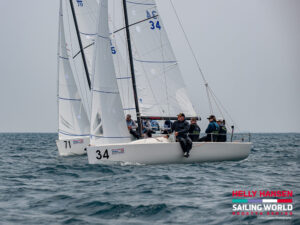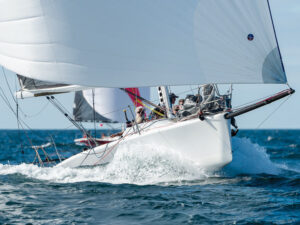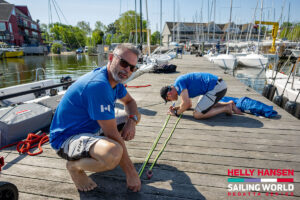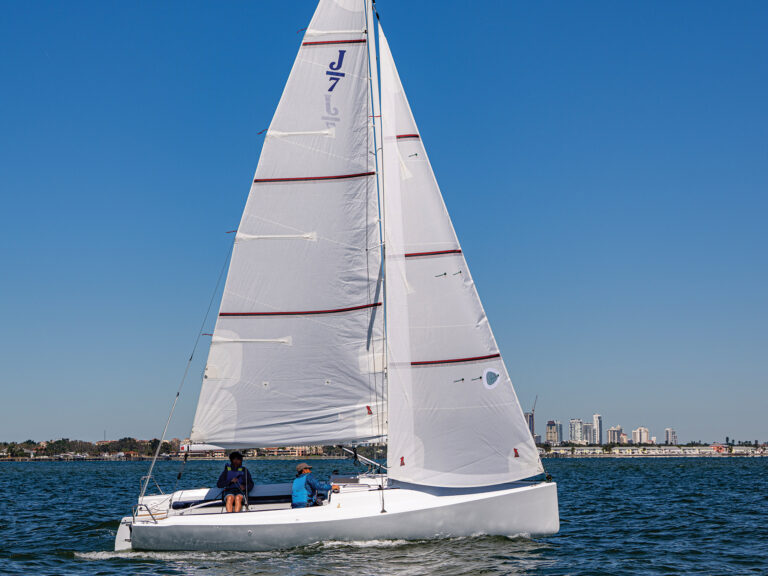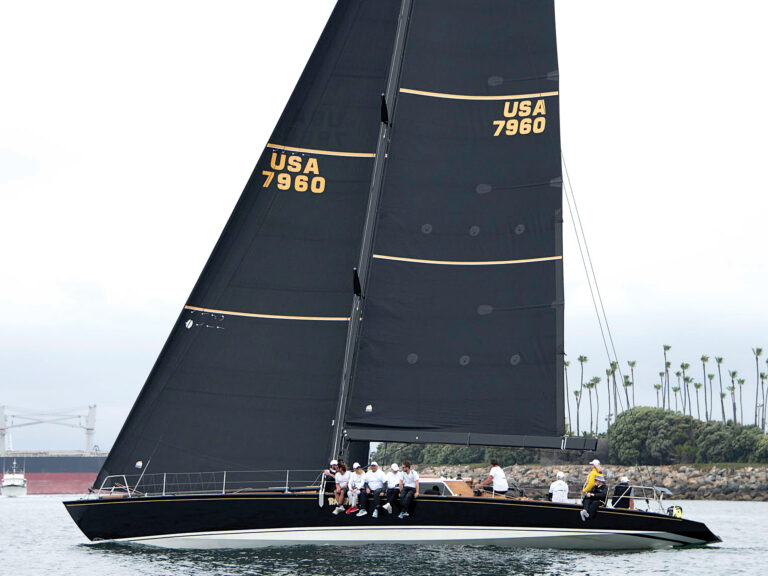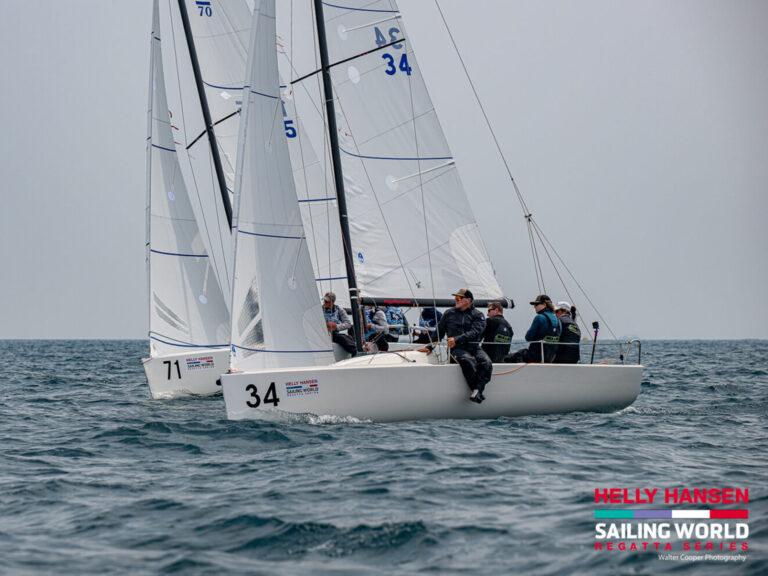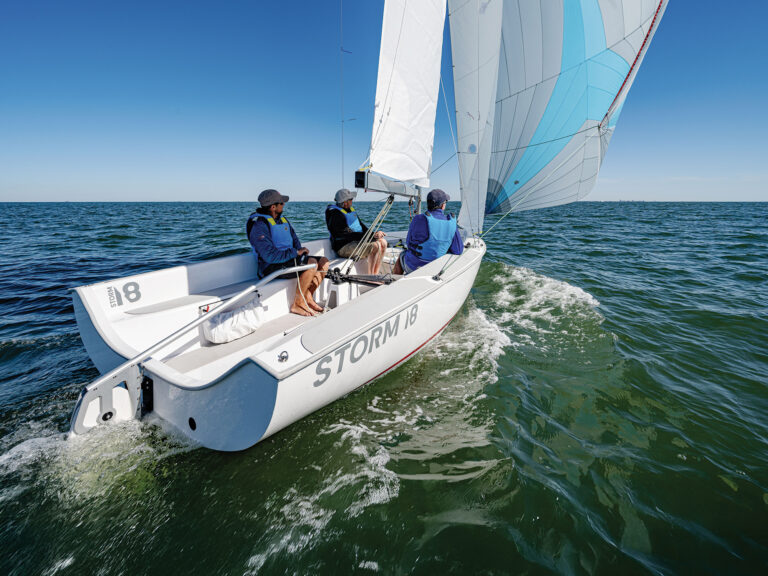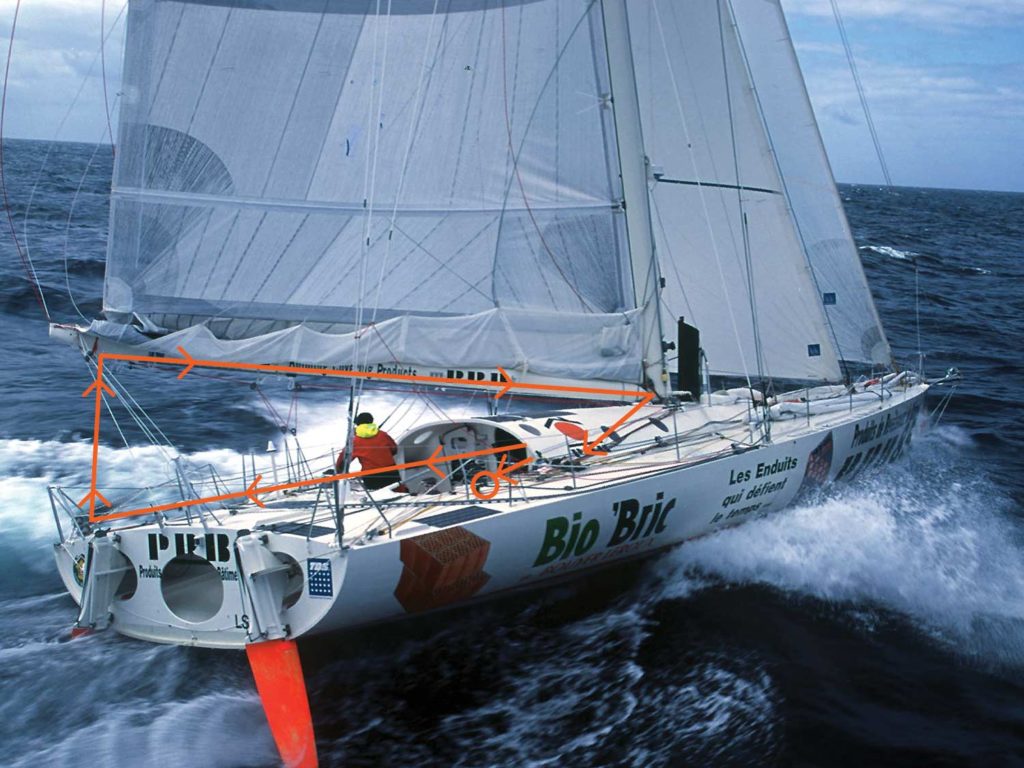
There is something about the silence of sailing. It’s the movement through water—be it slow and stately, or fast and frenetic—powered solely by the wind. The absence of a noisy engine hammering away is one of the attractions of the sport, or at least in theory it is. The farther we stray from the coast and the bigger the boat, the more reality diverges from the picture; power is essential to any long-distance cruising or racing boat.
These days the source might be solar panels, but the diesel generator or alternator is still a critical piece of equipment for many bluewater sailors. If the boat relies on desalination, there will be no fresh water without power. There will be no instrument or satnav systems, no autopilot, no satellite communications for weather forecasts, no radar or even navigation lights. The loss of these things isn’t necessarily a big deal—particularly in daylight, fair weather, and with the security of a harbor or marina just a short sail away—but there are times when it can be very, very serious.
“It was the last day of 2000, and when I started the engine the previous day, I had heard a bad noise, but I didn’t care. The day after, I wanted to start it again to charge the battery, and nothing happened when I switched on the contact and pushed on the start button…. So, my first job was to remove the starter to understand why it didn’t switch on. I removed it from the engine, and then I opened it, and I found out all the brushes are more or less dust, nothing repairable.”
The speaker was Michel Desjoyeaux. And on New Year’s Eve 2000, he was leading the Vendée Globe—the nonstop solo circumnavigation, arguably the planet’s toughest and biggest ocean race. If that weren’t bad enough, Desjoyeaux was deep in the Southern Ocean on his way to Cape Horn. “My press officer told me, ‘But you should have a spare for this, no?’ And I told him: ‘No. If I carry a spare part for this, then I carry two boats, which is not efficient,’” he continued.
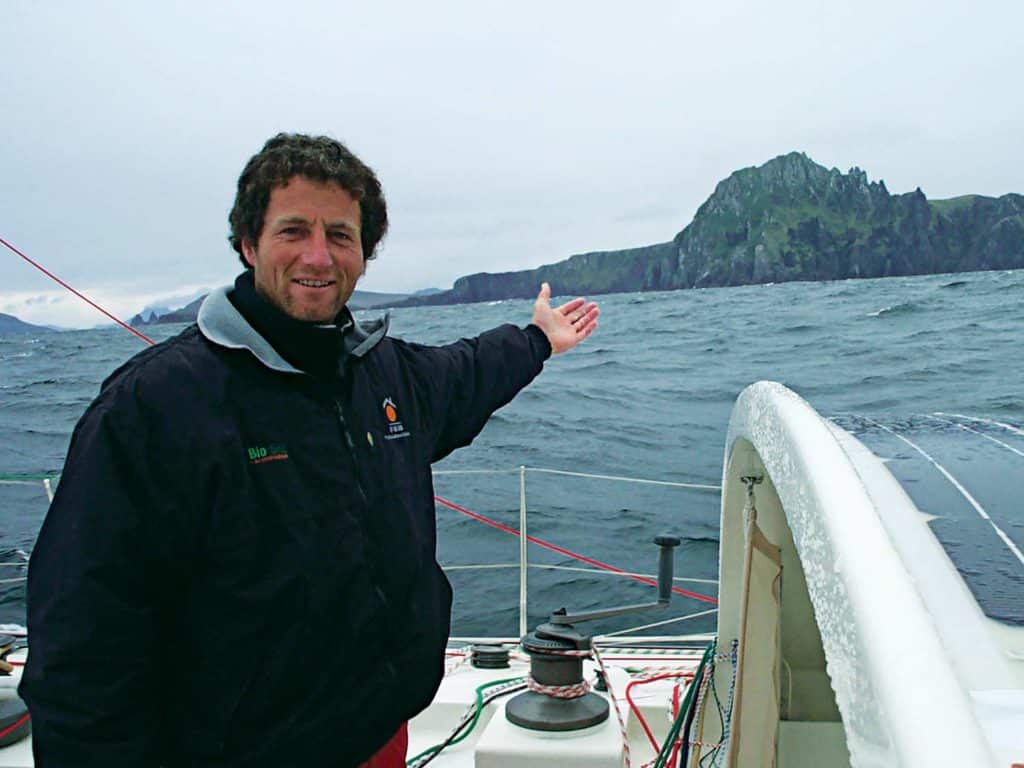
The engine had been built by Yanmar, and Desjoyeaux had good contacts there, so his first act was to talk to them. “They told me: ‘Oh, we are very sorry. Something [like this] happens one time in a million maybe, and it’s a very low occurrence issue you have now, and we are very sorry, and we can’t help you because there is no solution.’”
The response must have seemed like the end. The rules are strict for the Vendée Globe race. Once started, there is absolutely no physical assistance allowed—so for Desjoyeaux, a stop anywhere to pick up spare parts would mean that he was out of the race. How could he possibly fix the starter without the parts? It would have been a harsh ending to what had been a brilliant performance to that point. However, Desjoyeaux was no ordinary sailor; there’s a reason he’s known as “Le Professeur.”
Desjoyeaux grew up in his parent’s shipyard in Concarneau in Brittany, and sailing was his life from the very beginning. “My home was attached to the yard, and the yard was our recreation when we were young. We didn’t need to go on holidays anywhere because…I mean, we didn’t want to go on holidays anywhere because we had everything we needed. I also did all my school lessons until I was 10 with my mother, who did the teaching at home.” It’s hard to imagine a better background for becoming familiar with boats and marine engineering.
He was just 20 when he competed in his first round-the-world race as crew for the legendary Eric Tabarly, and he’s followed that French icon into sailing history with a series of remarkable achievements. Few would argue against the assertion that Desjoyeaux is the most successful solo racer of all time, having won the Vendée Globe not once but twice. On the second occasion, he overcame a 40-hour deficit to win. (He restarted, after having to return to repair the boat.) He’s also won the less well-known (outside France anyway) but probably more competitive Solitaire du Figaro three times, along with two major trans-Atlantic races.
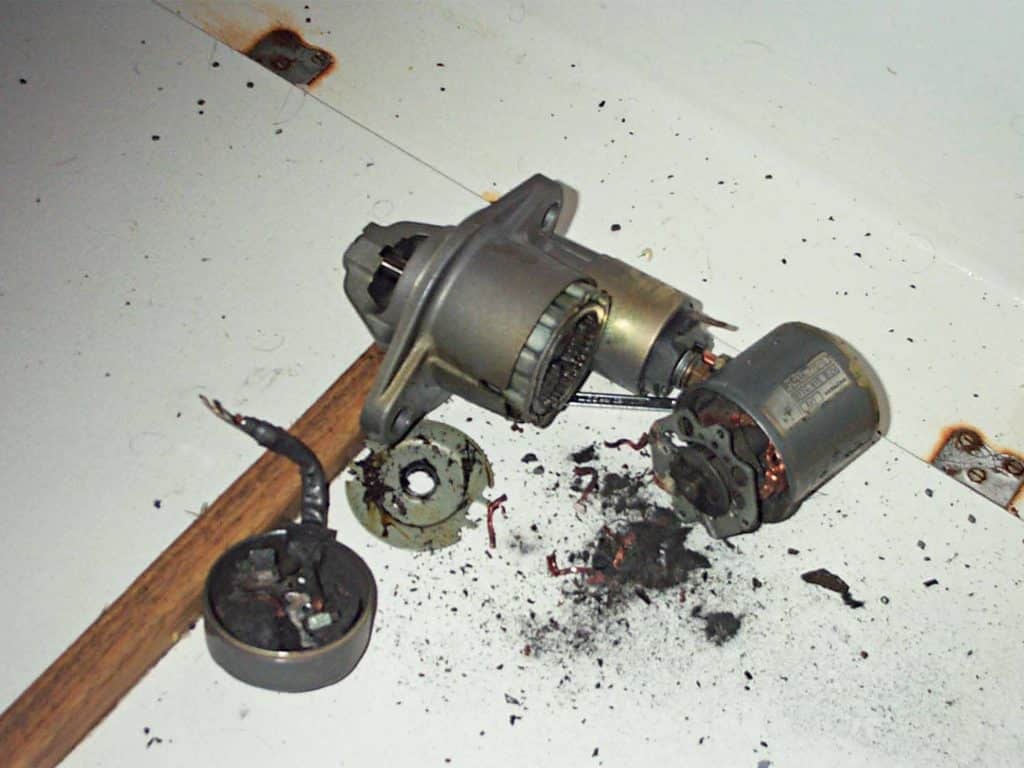
The man has had a great career, and one of the most extraordinary moments came after his discovery that he couldn’t start his engine in the Southern Ocean. “I switched off all the electronics that were not useful, only the [auto]pilot with the compass left—no displays, no computer, no satellite connection, no weather forecast, nothing. The minimum possible, no navigation lights, I was fully in the Southern Ocean, and I didn’t need lights because there is nobody. And I spent a lot of time at the helm to save energy, preferring to sleep during the day with the solar panel to help me. During those days, I tried to understand what I could do to try to find a good solution.
“I was a bit farther [east] than New Zealand, so it was too late to make a U-turn. This was very lucky for me because I think that if I would have been able to get to Australia or New Zealand, then certainly I would. I think that maybe I would postpone, stop the race…put the traffic indicator light on left and turn.” However, pulling out wasn’t an option, so Desjoyeaux had to find a way to repair the starter motor—or find a way to start the engine without it. It was a very long way to Chile without power, particularly without the desalinator (and no way to reconstitute freeze-dried food), the pilot or communications.
The state of the starter motor and lack of spares forced Desjoyeaux to look at the problem another way. Could he start the engine without it? The boat did have a second alternator. “There was a big additional pulley at the front of the engine, and the two alternators were horizontal, one each side. So my first idea was to remove one belt of one alternator, and drill a hole to be able to put a screw in and attach a padeye to the pulley.” The padeye would allow Desjoyeaux to attach a rope to the pulley. “Then maybe four or five turns [of a rope] around the pulley, then find a second block on the front of the boat, and go out from there to the cockpit and onto a winch.”
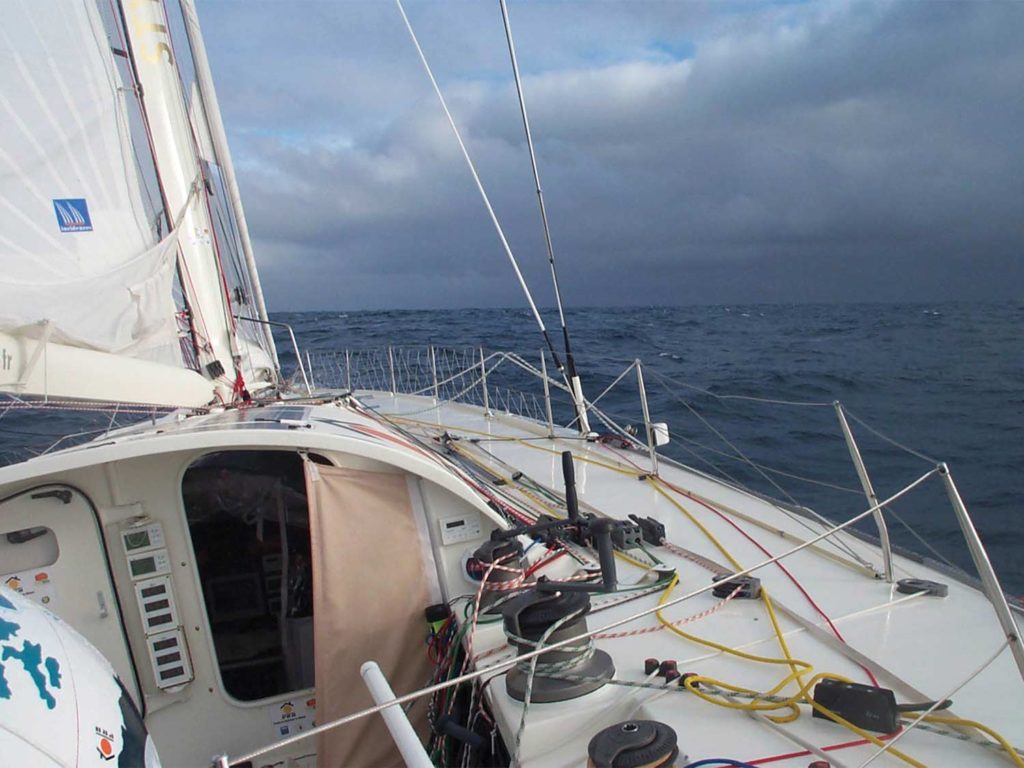
The rope (it was red) that Desjoyeaux had attached to the pulley would allow him to turn the engine over—just as a rope starts a lawn-mower engine or an outboard. Once it was led out from the interior of the boat onto the deck, he could try using the mechanical advantage of the boat’s winches to help him pull. “I turned the winch, and I understood directly that the load was not necessarily very big. I had the capacity to pull this load, but for sure, with just a winch, I would not be able to pull long enough and hard enough to make it start. It was cold, the temperature was more or less between zero and 5 degrees Celsius, so it’s not very easy for a diesel engine to start. And I didn’t have enough battery to preheat the engine.”
Still, Desjoyeaux could feel his excitement rising; back at the Yanmar offices, they had been able to start an identical engine manually.
“One of the things we asked them was to understand how much you can unscrew the injector.” Desjoyeaux’s engine didn’t have a decompression lever, fitted to older engines to allow them to be manually started using a hand-crank. They reduce the pressure in the engine so it’s easier to turn it over. Then once the rotation of the engine has begun and it has momentum, the pressure is reapplied, and the diesel explodes.
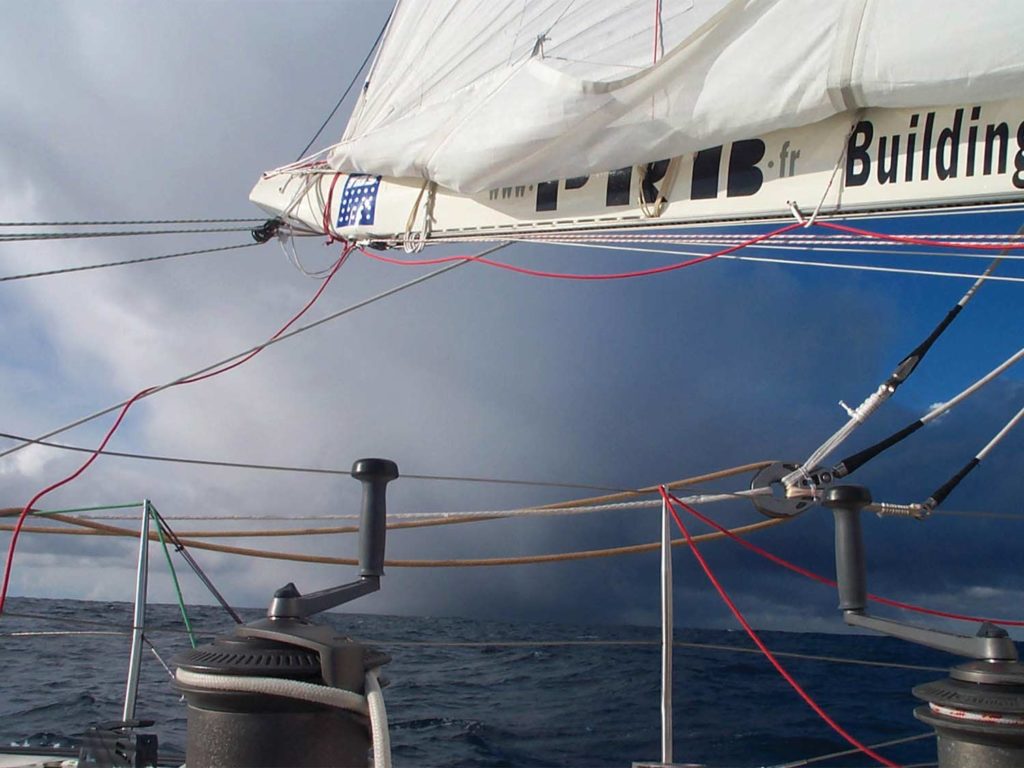
“I unscrewed each injector. I remembered it’s a three-quarter turn on each screw to have the minimum pressure to make turning it over easy, but also the minimum pressure to make the explosion possible when the engine compresses the diesel. In the Yanmar factory, they were able to start the engine with three people pulling on the rope. I was confident,” he explained, “because I realized that the load to turn the engine and try to start it was not very big. We didn’t need tons, we just needed maybe 200 or 300 kilograms, but no more.” And Desjoyeaux, a master problem solver, knew exactly where he could find a force that would pull a rope with 200 or 300 kilograms of load.
“I tried to make a system to pull with the jib. It connected directly to the jib sheets.” The idea was that if he released control of the sail, the wind would pull the starter rope. “The problem is that when you ease a sheet, you get a very big load at the beginning, but when you start to ease the sheet, the sail collapses completely and you are not able to maintain power long enough to start the engine.”
Desjoyeaux realized that the jib wasn’t powerful enough. “I didn’t want to use a bigger sail or a sail that could break because I would need to do this operation every day. So my idea was to go to the mainsail.” Desjoyeaux pulled in the main as hard as he could onto the centerline and cleated the sheet. The red rope was then wrapped around the engine pulley at one end, with the other run out to the end of the boom, along it to the mast step and then cleated off on the deck. Once everything was in place, Desjoyeaux released the mainsheet. The load on the oversheeted sail pushed it out, transferring this force to the red rope all the way back to where it was wrapped around the pulley and, in his own words:
“So, my red line [attached with the turns around the engine pulley] went to a pulley at the back of the boat, up to the boom, back to the mast foot, the mast base, back to the cockpit. When I needed to start the engine, I prepared my rope in the boat and on the engine with the five turns. Then I trimmed in the mainsail more than needed for the performance, pulled on the red line, pulled on the winch very strong, removed the mainsail sheet from the winch, put the contact on the engine, and burned the diesel arriving at the injector with a small spark to heat it just before the injectors. And then I came to the cockpit, opened the clutch of the mainsail, and then it pushed the main out. The first time I tried this, the engine started. It was incredible because it meant that I was able to continue the race.”
The solution was quite breathtaking for its ingenuity. Desjoyeaux was able to finish the race without stopping for spares or help, and subsequently won his first Vendée Globe. It was an exemplary piece of problem-solving that has joined the canon of MacGyver solutions, being used again by Sébastien Destremau in 2016—and quite probably by others. When I heard the story the first time, I could not help but wonder how I might have fared in the same situation. Desjoyeaux mostly got to his answer via a series of logical steps, but there were two pieces of truly inspired thinking. First, taking the step to look for a way to start the engine without the starter motor, and second, realizing that he could use the sails to provide the force required on the starter rope.
It’s easy to think that only an exceptionally creative mind could have come up with a solution like this, but writers such as Edward de Bono, author of Lateral Thinking, or Michael Michalko, who penned the much more recent Thinkertoys, want us to understand that there are practical methods to improve creative thinking, and they can be learned. An example from Thinkertoys covers exactly the ground that Desjoyeaux traveled to get to the first part of his solution. Imagine, Michalko suggests, that you are in a room with two pieces of rope hanging from the roof. The challenge is to tie the loose ends of the ropes together. Unfortunately, they are sufficiently far apart that when you hold onto one, you cannot reach the dangling end of the other.
“Initially, you might state the problem as: ‘How can I get to the second string?’” Michalko writes. “However, you would then waste your energy trying to get to the second string, which is not possible. If, instead, you state the problem in a different way: ‘In what ways might the string and I get together?’ you will likely come up with a solution.” This is because a different range of solutions opens up with the reframing, like tying a weighty object to the loose end of one rope and setting it off in a pendulum motion that will swing it toward you while still holding the other rope.
What led Desjoyeaux to a solution initially was the way he framed the problem. He was focused on the real goal—starting the engine—rather than getting distracted by the apparent problem, a broken starter motor. They say that necessity is the mother of invention, and it may well be that Desjoyeaux was able to figure out a way to start his engine simply because he had no other options. The fact that the starter motor was completely beyond repair may have been what saved Desjoyeaux’s race; he had no choice but to look for other ways to start the engine.
A great deal of de Bono’s Lateral Thinking process is about reframing things, or at least escaping the obvious framing, because that’s often the route to an answer. When the problem is structured in the right way, the answer will come. After talking it through with him, I don’t think Desjoyeaux knows how he arrived at his solution. It’s trite to say that it just came to him, but that is the way it works sometimes. What de Bono, Michalko and other thinkers in this area want us to understand is that this moment of it “just coming to us” can be made more likely with the right techniques.
“The aim of lateral thinking is to look at things in different ways, to restructure patterns, to generate alternatives. The mere intention of generating alternatives is sometimes sufficient,” as de Bono puts it. For those of us not blessed with Desjoyeaux’s problem-solving superpower, there are well-established techniques to do this. Many are straightforward, for instance what Michalko calls slice and dice. “To stimulate new ideas, identify and list the various attributes of a problem and work on one attribute at a time,” he explains in Thinkertoys.
These are just the components of the problem, things such as materials, structure, the function and processes, cost and value, and so on. If we were to break down the diesel engine in this way, we might get a list something like this:
- Metal
- Precision engineering
- Burns diesel fuel to create mechanical energy
- Efficient method of converting fuel to energy
- Ignites through diesel mixing with highly compressed hot air
- Delivers power when an exploding gas expands and moves a piston to rotate an axle
- Starts when required pressure and temperature are achieved in a pre-combustion chamber so that the diesel will burn
- One of many ways of creating mechanical energy by burning carbon fuel
Everyone’s list will be different, but there’s a good chance that something in there will spark the right line of thought. In this case, it’s probably the notion that the starter motor isn’t doing anything that clever. All that’s required is sufficient force to compress the air and some warmth applied to the fuel. The problem then becomes one of applying the necessary force and warmth. And there’s sufficient force on a sailboat to move it through the ocean, so why can’t that be applied to starting the engine?
Understanding techniques like this—and there are many others—can be a boat saver, or even a lifesaver, when faced with a challenge a long way from help. If we’re going to put ourselves in situations where that’s possible or even likely, then doing the groundwork now and tuning up our problem-solving skills will, at some point, pay a high rate of return on the investment.

